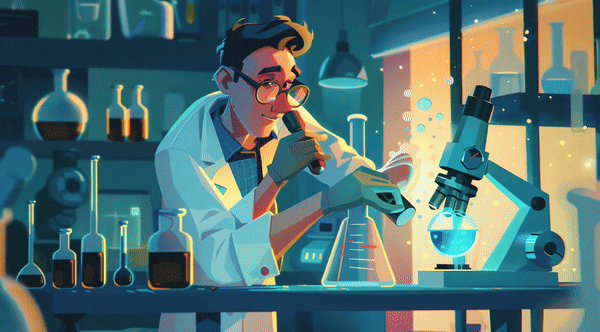Microbiology laboratories play a crucial role in society. Across the globe, microbiologists are the first in line to identify new strains of infectious and dangerous diseases.
Experts in the field are constantly working to combat antibiotic resistance and develop new treatments for infectious diseases. They play a fundamental role in the provision of healthcare around the world.
The majority of clinical microbiology laboratories still rely heavily on traditional methods and human-led laboratory processes.
However, the world of healthcare is continuously evolving, and technological advancements are providing innovative ways to improve and streamline laboratory processes within microbiology.
In this article, we explore how technological advancements are currently being used to revolutionise the microbiology lab. We also question whether there are any downsides to technological advances.
The Increase In Laboratory Automation
Laboratory automation processes are being integrated into clinical laboratories around the world. Laboratory automation involves the use of technology and machinery to perform day-to-day laboratory tasks and processes.
A microbiology lab may incorporate a standalone automation system that performs a specific task, such as a liquid handling robot that rapidly and efficiently dispenses precise volumes of liquids.
Alternatively, some larger and more advanced microbiology laboratories may opt for total laboratory automation. This involves a fully integrated robotic system that automates and streamlines various processes within a working laboratory. Total laboratory automation requires the integration of a range of specifically designed equipment and software.
Laboratory automation offers a variety of benefits. It significantly improves efficiency by automating time-consuming laboratory processes.
Lab automation also reduces the number of human-made errors and reduces the number of laboratory staff required, which can cut laboratory costs. It also drastically improves accuracy whilst consistently providing high levels of productivity.
The Use Of AI In The Clinical Lab
In recent years, artificial intelligence has also found a place in the modern microbiology laboratory. Artificial intelligence programmes are being applied to various processes within microbiology labs.
For example, AI software can accurately and swiftly identify patterns, correlations, and anomalies in microbial data, which allows microbiologists to analyse data and make informed decisions based on their findings.
Artificial intelligence is also being used to personalise the treatment of microbial infections. By taking into consideration an individual’s genetic predisposition, immune response, and microbiome composition, AI software can determine the most appropriate antimicrobial agents and required dosage for each individual.
The Rise Of Next-Generation Sequencing (NGS) Technologies
Next-generation sequencing technologies have transformed microbiology in the past decade. NSG is an advanced technology used to determine the sequence of DNA or RNA and is used to study genetic variation.
Within microbiology laboratories, next-generation sequencing technologies are commonly used for the high-throughput sequencing of microbial genomes. NGS is also used for the sequencing of metagenomes, which involves the direct sequencing of DNA extracted from environmental samples.
It is also widely used within microbiology for epigenomic analysis, transcriptomic studies, and phylogenomic analyses.
Are There Downsides To Advanced Technology In Microbiology?
Technological advances continue to transform microbiology laboratories, enabling a range of healthcare breakthroughs.
For example, the rapid development of accurate and reliable Real-Time PCR Detection Kits aided in the detection of the SARS-CoV-2 virus (Coronavirus) during the global pandemic. This allowed the population to limit the spread of the deadly virus and reduced the number of infections.
However, advanced technology also poses a range of challenges. And it has many downsides that should not be overlooked.
For example, automation technology, robotics, AI software and NGS technologies are incredibly expensive to install and maintain.
The high costs mean that smaller laboratories with limited funding will not have access to the same technology or opportunities as larger companies.
In addition, the reliance on technology within a lab leads to a reduced manual workforce. Aside from losing valuable team members, the industry runs the risk of losing skilled professionals who can pass on their knowledge and skills to future microbiologists.
Digital Health Buzz!
Digital Health Buzz! aims to be the destination of choice when it comes to what’s happening in the digital health world. We are not about news and views, but informative articles and thoughts to apply in your business.


